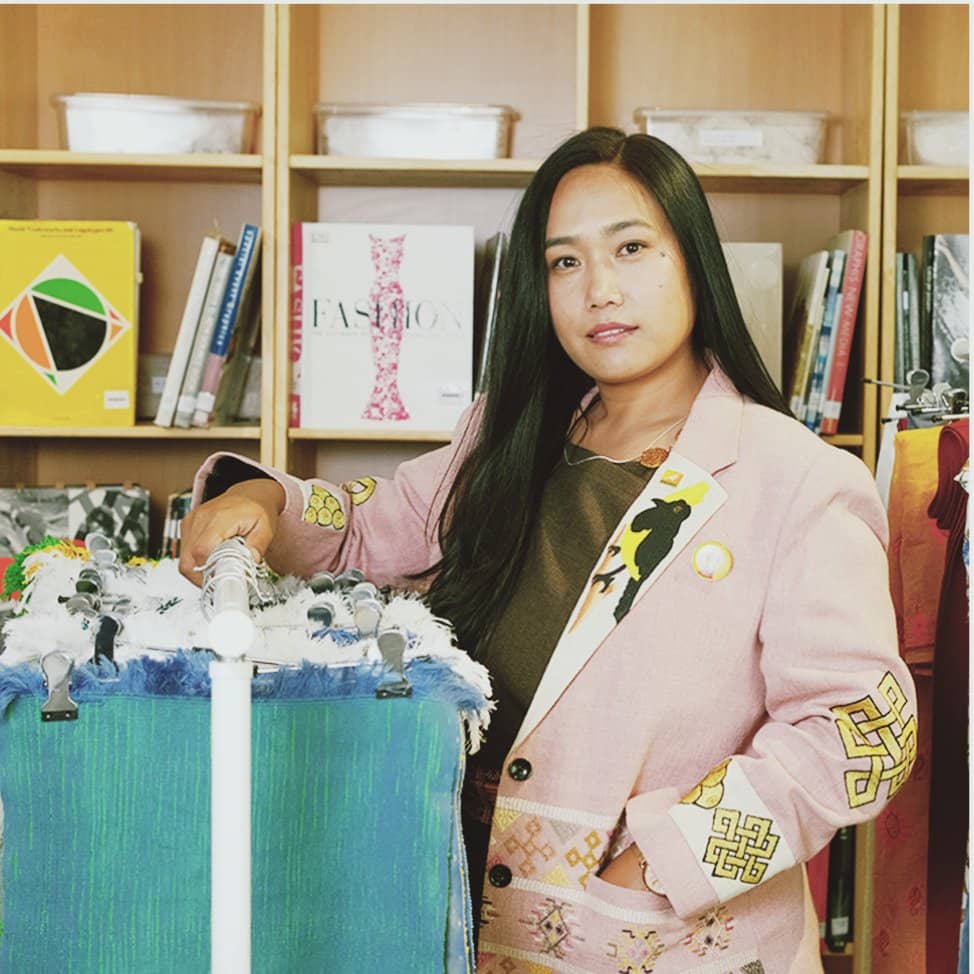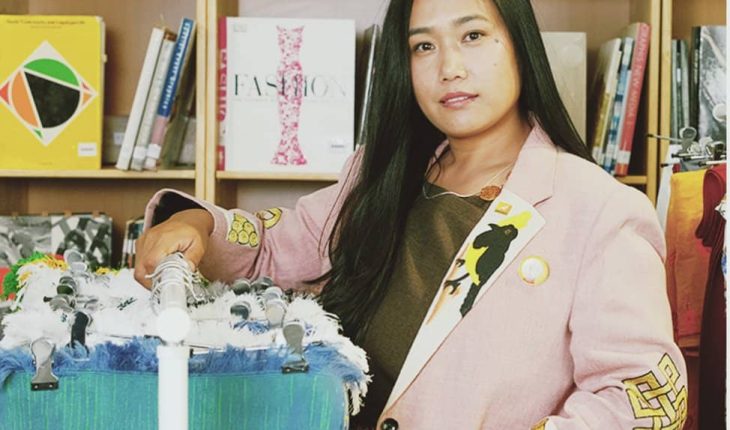
Bhutan’s Natural Dye Fashion Revolution
TIL BDR GHALLEY
Thimphu
In the quiet southern village of Pekarzhing, Chukha, 33-year-old designer Leena D. Ghalley is quietly transforming Bhutan’s fashion landscape.
From modest beginnings in 2018 with only three staff members, her studio, Leena’s World, has nurtured a movement blending natural dyes and traditional Bhutanese textiles to create contemporary, sustainable designs that empower women.
“I didn’t want to buy fabric and just stitch clothes,” she said. “I wanted to begin from scratch, work with what nature gives us, and create designs that truly carry a soul and story.”
Graduating in fashion design from India in 2016, Leena diverged from the conventional path followed by most Bhutanese designers.
“Unlike other designers, my work started from scratch,” she reiterates, underscoring her dedication to originality and experimentation.
Her artistic focus is rooted in natural dyes sourced from the flora around her village—a practice that is both environmentally responsible and culturally meaningful.
“I have experimented with everything from marigold flowers to tree barks, bushes to vibrant leaves, creating designs that truly reflect the natural beauty that surrounds us.”
“Our soil, plants, and forests are rich in colour,” she adds. “Why should we depend on chemicals when nature can give us everything we need?”
Her garments are not simply stitched pieces of fabric, they are canvases of nature, where every colour is thoughtfully sourced from the earth.
From turmeric yellows and marigold golds to deep bark browns and leafy greens, each shade reflects months of trial and patience as she coaxes pigments from raw materials using traditional, chemical-free processes.
For Leena, sustainability can be stylish, soulful, and undeniably sophisticated.
Leena’s designs are a fusion of Western contemporary styles and Bhutanese fabrics, enhanced with traditional embroidery techniques that tell the story of Bhutan’s rich culture.
“My goal is to promote Bhutan not just as a tourist destination but as a leader of sustainable fashion,” she says.
“We have many talented artisans here, but they often remain unrecognized. Through my designs, I want to give them the recognition they deserve on the international stage.”
Her work also carries a social mission. Leena consciously employs women who are often marginalized in society, including single mothers and divorced women, helping them achieve financial independence.
Among her proudest achievements is employing a 70-year-old woman from Pasakha, Phuentsholing, and supporting local weavers with sustainable livelihood opportunities.
“Fashion for me is not just about clothing but about community building and uplifting lives.”
Born into a family where weaving flourished as a local tradition, Leena’s passion began early, however, the journey wasn’t always easy.
“Initially, I had the interest but lacked the moral support. Fashion is not seen as a traditional path here.” Slowly, however, she found her calling in the synergy between design and the environment.
Working exclusively with natural dyes comes with serious challenges. “In the southern region, humidity is very high—especially in summer. Drying dyed fabric becomes extremely difficult, and sometimes the end result changes unexpectedly.”
Yet rather than discourage her, these obstacles push Leena to innovate. She spends weeks experimenting with pigments, perfecting shades that capture nature’s raw beauty while ensuring they remain colourfast and durable enough for global markets.
“To grow a business, you must balance vision and budget,” she noted. “Every idea needs heart, but also discipline.”
Her upcoming collection for Bhutan’s Fashion Week, tentatively slated for October 2025, is shaping up to be her most ambitious yet a tribute to the country’s sacred architecture.
Drawing inspiration from sacred sites like Taktsang Monastery and traditional chortens, she incorporates the symbolic pattern into modern garments.
“This collection is about telling the architectural stories of Bhutan in a contemporary style,” she says, blending modern fashion with cultural symbolism.
Through her designs, Leena is promoting Bhutan on the international stage by highlighting the country’s rich heritage, sacred symbols, and artisanal craftsmanship.
Each garment tells a story of Bhutan’s culture and spirituality, blending traditional motifs with contemporary fashion that appeals to global audiences.
Health and environmental consciousness are cornerstones of her philosophy. “Today, people care about what they’re wearing—chemicals touch our skin directly,” she says.
“That’s why I never use synthetic fibres or chemical dyes. My garments are for people who believe clothing should be beautiful, sustainable, and safe.”
Her vision is expanding steadily. She has begun collaborating with local yak wool and sheep wool producers, aiming to refine winter collections infused with local textures.
At the same time, she plans to venture into sustainable jewellery, integrating locally sourced and recycled materials to extend her devotion to nature across every aspect of her brand.
In a world increasingly dominated by fast fashion and fleeting trends, Leena D. Ghalley’s dedication to natural dyes and sustainable design shines as a leader of authenticity and environmental responsibility.
By turning flowers into colour, stories into stitches, and fashion into empowerment, she is proving that true innovation often begins by returning to our roots.



